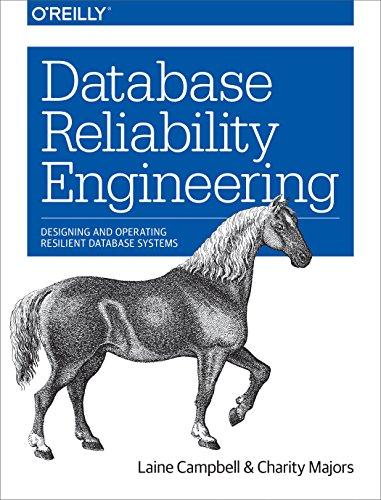Question
The programming language is Java and all of the Classes I was given are in bold. ALIEN CLASS import imagePackage.RasterImage; import java.awt.BasicStroke; import java.awt.Color; import
The programming language is Java and all of the Classes I was given are in bold.


ALIEN CLASS
import imagePackage.RasterImage;
import java.awt.BasicStroke; import java.awt.Color; import java.awt.Dimension; import java.awt.Graphics2D; import java.awt.Toolkit; import java.awt.geom.*; import java.awt.geom.Point2D; import java.awt.geom.Rectangle2D; import java.io.PrintStream;
// ALIEN is a COMPOSITION of Point2D // ALIEN is an AGGREGATION of Color
public class Alien { // functionality to draw an Alien, given a position and Graphics2D object private Point2D.Double pos; private Color col; private double width; private double height; public Alien(Point2D.Double pos) { this.pos = new Point2D.Double(pos.getX(),pos.getY()); this.col = Color.BLACK; this.width = 50; this.height = 40; } public Alien(Point2D.Double pos, double width, double height, Color col) { this.pos = new Point2D.Double(pos.getX(),pos.getY()); this.width = width; this.height = height; this.col = col; } public Alien(Alien other) { this.pos = new Point2D.Double(other.pos.getX(),other.pos.getY()); this.col = other.col; this.width = other.width; this.height = other.height; } public void setColor(Color col) { this.col = col; } public void setPos(Point2D.Double pos) { this.pos = new Point2D.Double(pos.getX(), pos.getY()); } public void drawAlien(Graphics2D gfx) { int[] xPoints = new int[6]; int[] yPoints = new int[6]; int lx = (int) this.pos.getX(); int ly = (int) this.pos.getY(); int cx = (int) (lx + this.width/2); int cy = (int) (ly + this.height/2); int rx = (int) (lx + this.width); int ry = (int) (ly + this.height); xPoints[0] = lx; yPoints[0] = ly; xPoints[1] = cx; yPoints[1] = cy; xPoints[2] = rx; yPoints[2] = ly; xPoints[3] = rx; yPoints[3] = cy; xPoints[4] = cx; yPoints[4] = ry; xPoints[5] = lx; yPoints[5] = cy; gfx.setColor(this.col); gfx.setStroke(new BasicStroke(2.0f)); gfx.fillPolygon(xPoints, yPoints, xPoints.length); } @Override public String toString() { String result = "Alien: pos= " + this.pos + ", size= " + this.width + ", " + this.height; return result; }
public static void main(String[] args) { /* * In this task, you are to create an Alien class that stores the * * */ PrintStream out = System.out; Dimension screen = Toolkit.getDefaultToolkit().getScreenSize(); RasterImage gameBoard = new RasterImage(640,480); gameBoard.show(); Graphics2D g = gameBoard.getGraphics2D(); Alien a1 = new Alien(new Point2D.Double(100, 100)); Alien a2 = new Alien(new Point2D.Double(200, 100),100,150,Color.RED); Alien a3 = new Alien(a1); a3.setColor(Color.ORANGE); a3.setPos(new Point2D.Double(100, 300)); a1.drawAlien(g); a2.drawAlien(g); a3.drawAlien(g); } }
ANGRYALIEN CLASS
import imagePackage.RasterImage;
import java.awt.BasicStroke; import java.awt.Color; import java.awt.Dimension; import java.awt.Graphics2D; import java.awt.Toolkit; import java.awt.geom.*; import java.awt.geom.Point2D; import java.awt.geom.Rectangle2D; import java.io.PrintStream;
public class AngryAlien extends Alien {
public static void main(String[] args) { // Use this to test creation (instantiation) and display of an individual // AngryAlien // OR - use the main method in BattleField to test
} }
DOCILEALIEN CLASS
import imagePackage.RasterImage;
import java.awt.BasicStroke; import java.awt.Color; import java.awt.Dimension; import java.awt.Graphics2D; import java.awt.Toolkit; import java.awt.geom.*; import java.awt.geom.Point2D; import java.awt.geom.Rectangle2D; import java.io.PrintStream;
public class DocileAlien extends Alien {
public static void main(String[] args) { // Use this to test creation (instantiation) and display of an individual // DocileAlien // OR - use the main method in BattleField to test
} }
NEUTRALALIEN CLASS
import imagePackage.RasterImage;
import java.awt.BasicStroke; import java.awt.Color; import java.awt.Dimension; import java.awt.Graphics2D; import java.awt.Toolkit; import java.awt.geom.*; import java.awt.geom.Point2D; import java.awt.geom.Rectangle2D; import java.io.PrintStream;
public class NeutralAlien extends Alien {
public static void main(String[] args) { // Use this to test creation (instantiation) and display of an individual // NeutralAlien // OR - use the main method in BattleField to test
} }
BATTLEFIELD CLASS
import imagePackage.RasterImage;
import java.awt.Color;
import java.awt.Composite;
import java.awt.Dimension;
import java.awt.Font;
import java.awt.Graphics2D;
import java.awt.Paint;
import java.awt.Shape;
import java.awt.Stroke;
import java.awt.Toolkit;
import java.awt.geom.AffineTransform;
import java.awt.geom.Point2D;
import java.io.PrintStream;
public class BattleField {
public BattleField() {
}
public static void main(String[] args) {
BattleField battleField = new BattleField();
/*
* Exercise:
* Create an Array of Aliens, positioned according to a bounding box
*
*
*/
final int ROWS = 3;
final int COLS = 10;
Dimension screen = Toolkit.getDefaultToolkit().getScreenSize();
RasterImage gameBoard = new RasterImage(640,480);
gameBoard.show();
gameBoard.setTitle("BattleField");
Graphics2D g = gameBoard.getGraphics2D();
Alien[][] aliens = new Alien[ROWS][COLS]; // 2D array of Aliens
for (int col=0; col for (int row=0; row // create and initialize position of Aliens Point2D.Double pos = new Point2D.Double(col*60.0, row*60.0); aliens[row][col] = new Alien(pos); aliens[row][col].drawAlien(g); } public void draw(BattleField battleField) { int rows = battleField.ROWS; int cols = battleField.COLS; for (int row=0;row for (int col=0;col Point2D.Double pos = new Point2D.Double(col*60.0, row*60.0); aliens[row][col] = new Alien(pos); aliens[row][col].drawAlien(g); } } } } Hero shooter = new Hero(200,350); shooter.draw(g); // } }
Step by Step Solution
There are 3 Steps involved in it
Step: 1

Get Instant Access to Expert-Tailored Solutions
See step-by-step solutions with expert insights and AI powered tools for academic success
Step: 2

Step: 3

Ace Your Homework with AI
Get the answers you need in no time with our AI-driven, step-by-step assistance
Get Started


